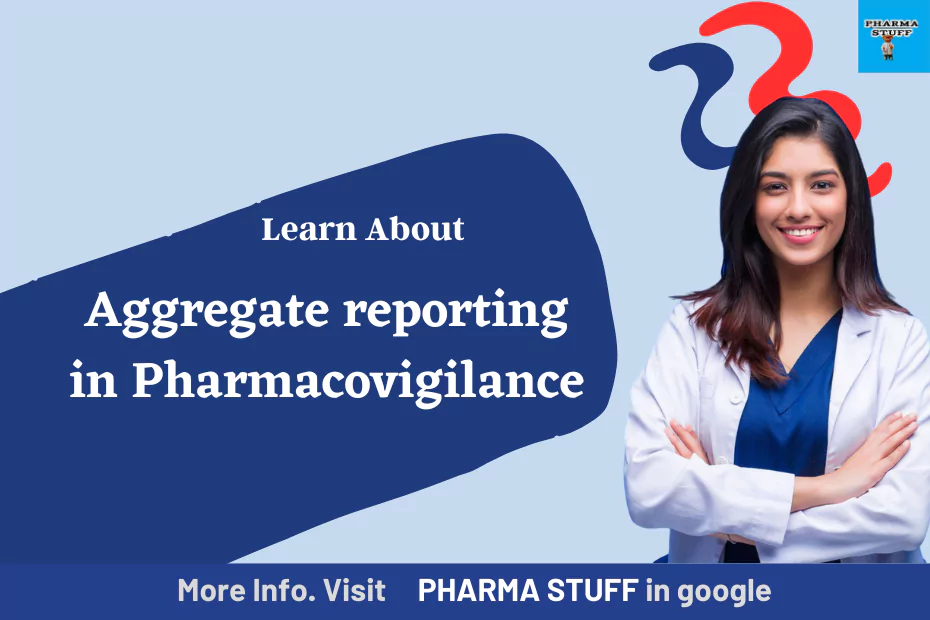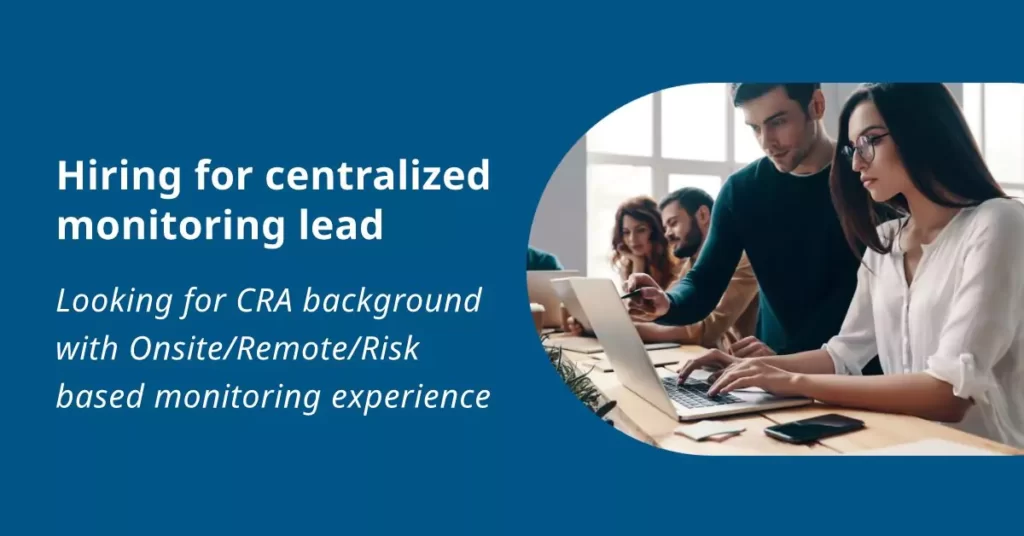Learn aggregate reporting in pharmacovigilance

Aggregate reporting is the process that reviews the cumulative safety information from a wide range of sources, on a periodic basis and submits the findings to regulators worldwide
Introduction of aggregate reporting in pharmacovigilance:
The periodical reporting of aggregate safety reports to regulatory health authorities includes a comprehensive overview of the safety profile of the medicinal product based on cumulative safety information accumulated by the Marketing Authorization Holder (MAH). They also provide assurance that the MAH is continuously monitoring and also critically assessing the benefit-risk profile of the product and taking appropriate risk-minimizing actions where new safety concerns or changes to the existing safety issues are identified. The international standard for periodic reports follows reporting guidelines set by the International Conference on Harmonization (ICH). In addition to the submission of Individual case safety reports (ICSRs), MAH is obliged to report the cumulative safety exposure data in periodical intervals to respective health authorities within specified timelines which in turn depends on the age of the medicinal product in the market and the type of aggregate report. This continued monitoring of aggregate safety data facilitates regulators and MAH to maintain a positive benefit-risk balance and implement the early risk minimization plans for safety concerns reported.
Types of Aggregate reports:
Based on marketing authorization status, different types of reports are prepared by MAH, which include the pre-approval aggregate safety reports and post-approval aggregate safety reports.
- Pre-approval aggregate reports: These include the cumulative summary of safety information for molecules under clinical development. It usually includes safety information from non-clinical studies and safety data for the subjects who participated in clinical trials.
A. Annual safety reports (ASRs) in Europe
B. IND annual reports in the United States
👉 Never Miss a Pharma Job Again
💼 Join our LIVE WhatsApp Group & Get Instant Updates. 📢 Click below to join:
📱 Join Click HereHowever, these two documents were replaced by a well-harmonized document, the development safety update report (DSUR), in which health regulators in the three ICH regions can receive the same information at the same time, thereby reducing the total number of reports generated.
2. Post-approval aggregate reports:
They provide the cumulative summary of safety information for the medicinal products from the marketing exposure. The sources of safety data include Non-clinical, clinical studies and Non-international studies, literature articles and spontaneous cases. The following types of reports are submitted for medicinal products post-marketing authorization.
- PADER (Periodic adverse drug experience report)
- Periodic Benefit Risk Evaluation Report (PBRER)/ Periodic safety update report (PSUR)
- Addendum to clinical overviews (ACO)
- Risk management plan (RMP)
Timelines and Regulatory requirements:
DSUR: Marketing authorization holders are obliged to report the evolving safety profile of the investigational medicinal products and actions taken or proposed for the new safety concerns identified during the development to the respective health authority and local regulatory bodies (eg., Institutional review board and local ethics committee). The significant safety findings, serious adverse reactions in line listings, and significant safety information of investigational products and of drugs of similar therapeutic classes from published literature are included in corresponding sections of DSUR.
It should be submitted no later than 60 calendar days from the DSUR data lock point (DLP). The DLP for DSUR is the stop date of reporting interval for a molecule from the date of authorization for conducting a clinical trial which is called the developmental International birth date (DIBD).
PBRER/PSUR:
The Benefit-risk evaluation should be carried out throughout the lifecycle of the medicinal product to promote and protect public health and to enhance patient safety through effective risk minimization plans and implementations. After a marketing authorization is granted, it is necessary to continue evaluating the benefits and risks of medicinal products in actual use and/or long-term use, to confirm that the benefit-risk profile remains favorable.
The date when the sponsor received authorization for marketing a drug is considered as the International birth date (IBD) of the medicinal product. The data lock point is the cut-off date for the completion of reporting interval. PBRER is a complex report with 20 sections including appendices compared to DSUR and PADER. The timeline for these post-approval aggregate reports varies based on the age of the medicinal product in the market which included the following kinds of reporting intervals and their respective regulatory timelines.
Timeline for PBRER/PSUR
| Reporting Interval category | Criteria for medicinal products | Regulatory timeline |
| Multilayer reporting Interval | Newly approved and marketed for 1 year period | 70 calendar days |
| Annual reporting interval | In the market for more than 1 year | 90 calendar days |
| Multilayer reporting Interval | In the market for more than 5 years | 90 calendar days |
The comprehensive list of active substances and combinations of active substances contained in medicinal products subject to different marketing authorizations, together with the corresponding EU reference dates, frequencies for submission of periodic safety update reports, and related data lock points could be obtained from the European Union reference dates (EURD) list. European Medicines Agency (EMA) updates the EURD list on monthly basis.
A brief overview of primary author responsibilities in preparation of PBRER is depicted here.
- A kick-off meeting is scheduled with multiple stakeholders for contributing information to various sections of the report. (Regulatory, clinical, finance/sales, medical, and signal management teams)
- Discussing action items with respective due timelines
- Retrieval/reconciliation of line listings (ICSR cases from safety database)
- Compilation of safety information received from different stakeholders into a draft PBRER report.
- Internal quality & medical review
- Amendments of draft report, if required per reviewer comments
- Approval of final report
- Submission of PBRER to regulatory authority (70th or 90th calendar day)
MAH can get relief in submitting PBRER/PSUR for the products which are well established, generic products in the market for longer time, homeopathic medicines and for traditional herbal medicines.
PADER:
Periodic Adverse Drug experience report is a post-marketing safety report submitted to the United States Food and Drug Administration (USFDA). The main objective is to provide summary data with an assessment of an approved drug product’s benefit risk profile from the post marketing exposure. The scope of PADER is limited to serious and unlisted cases which include concise narratives and summary analysis of 15-day ICSR reports. It also includes the regulatory actions taken for safety reasons during the reporting interval since last submitted PADER. The US FDA timeline for submission of PADER is presented in the table-2.
Table: 2- Timeline for PADER submissions
| Reporting Interval category | Criteria for medicinal products | Regulatory timeline |
| Quarterly | For the first three years, after marketing authorization | 30 calendar days |
| Annual | In the market for more than 2 years | 60 calendar days |
ACO:
Addendum to clinical overviews are aggregate safety reports which are submitted to respective regulatory authorities for renewal of marketing authorization license of a medicinal product. They include the benefit-risk balance of the medicinal product based on the clinical data. The structure and specifications of the ACO and PBRER are similar. But the information presented with greater emphasis on the data received since the last renewal/approval rather than discussing cumulatively. In addition, the history of Pharmacovigilance system inspections (date, inspecting authority, site inspected, type of inspection and if the inspection is product specific, the list of products concerned) with the details of findings and its impact if any on the benefit-risk profile of the product has to be included in the document.
Timeline: The MAH should submit the renewal application by the recommended submission dates published on the EMA website and, in any case, no later than 9 months before the marketing authorization ceases to be valid.
Risk Management Plan (RMP): The main objective of RMP is to document the risk management system considered necessary to identify, characterize and minimize a medicinal product’s important risks. The three major sections of this document include the following
- Safety specification: It describes the significant information on important identified and important potential risks and missing information and also on safety concerns which are need to be managed proactively.
- Pharmacovigilance Plan: It provides the planning of pharmacovigilance activities to characterize and quantify clinically relevant risks and to identify new adverse reactions.
- Risk minimization plan: It includes the planning and implementation of risk minimization measures (RMM), including the evaluation of the effectiveness of RMM activities.
MAH is responsible to maintain a proper risk management system and to monitor the continuous influx of safety data from multiple sources for the identification of any new risks and changes to the risk-benefit balance of the product. In general, RMP is warranted to prepare with the first 5-year renewal and in the time period when the first PSUR following the first 5-year renewal is due for submission, to review the list of safety concerns and the planned and ongoing Pharmacovigilance and risk minimization activities.




